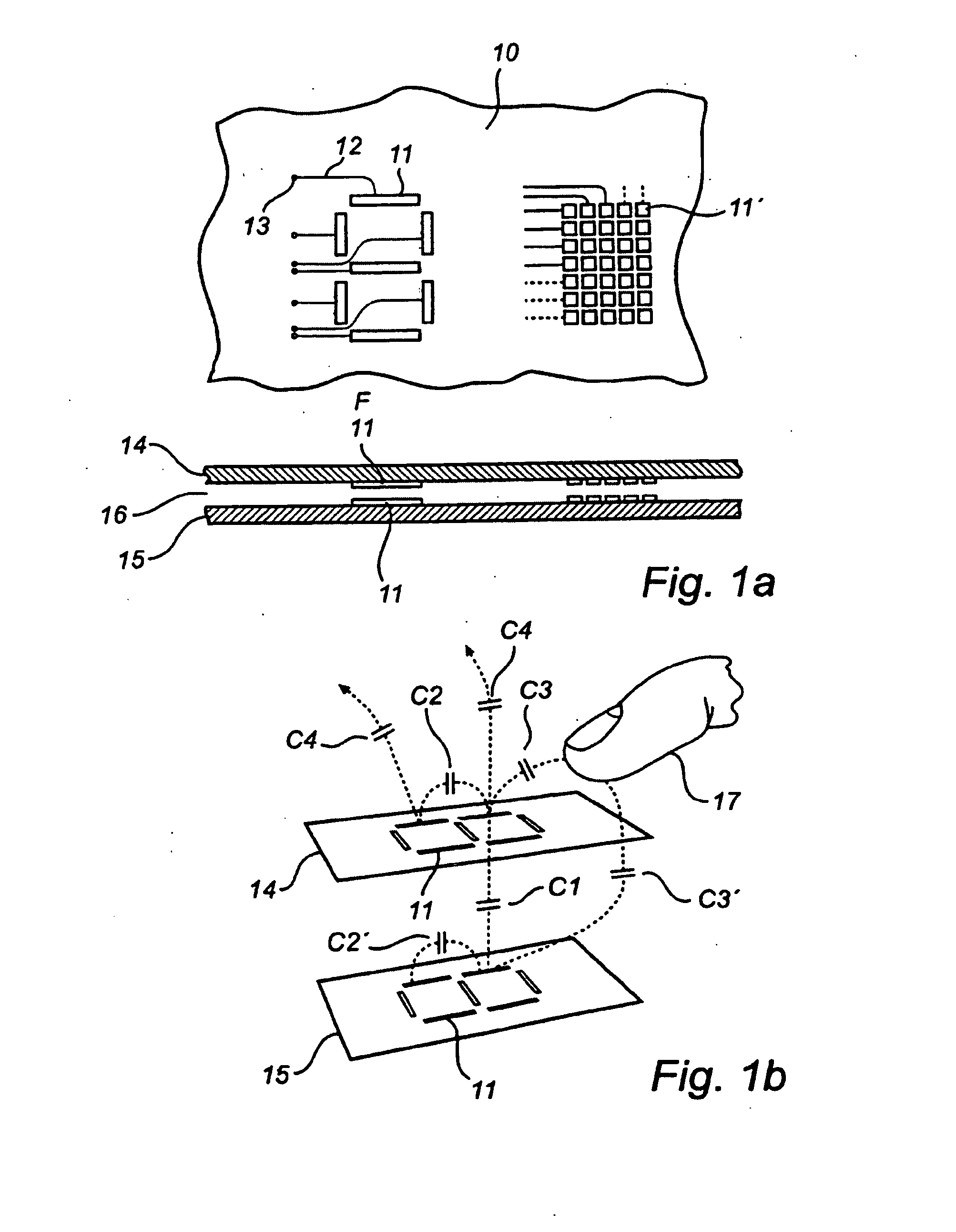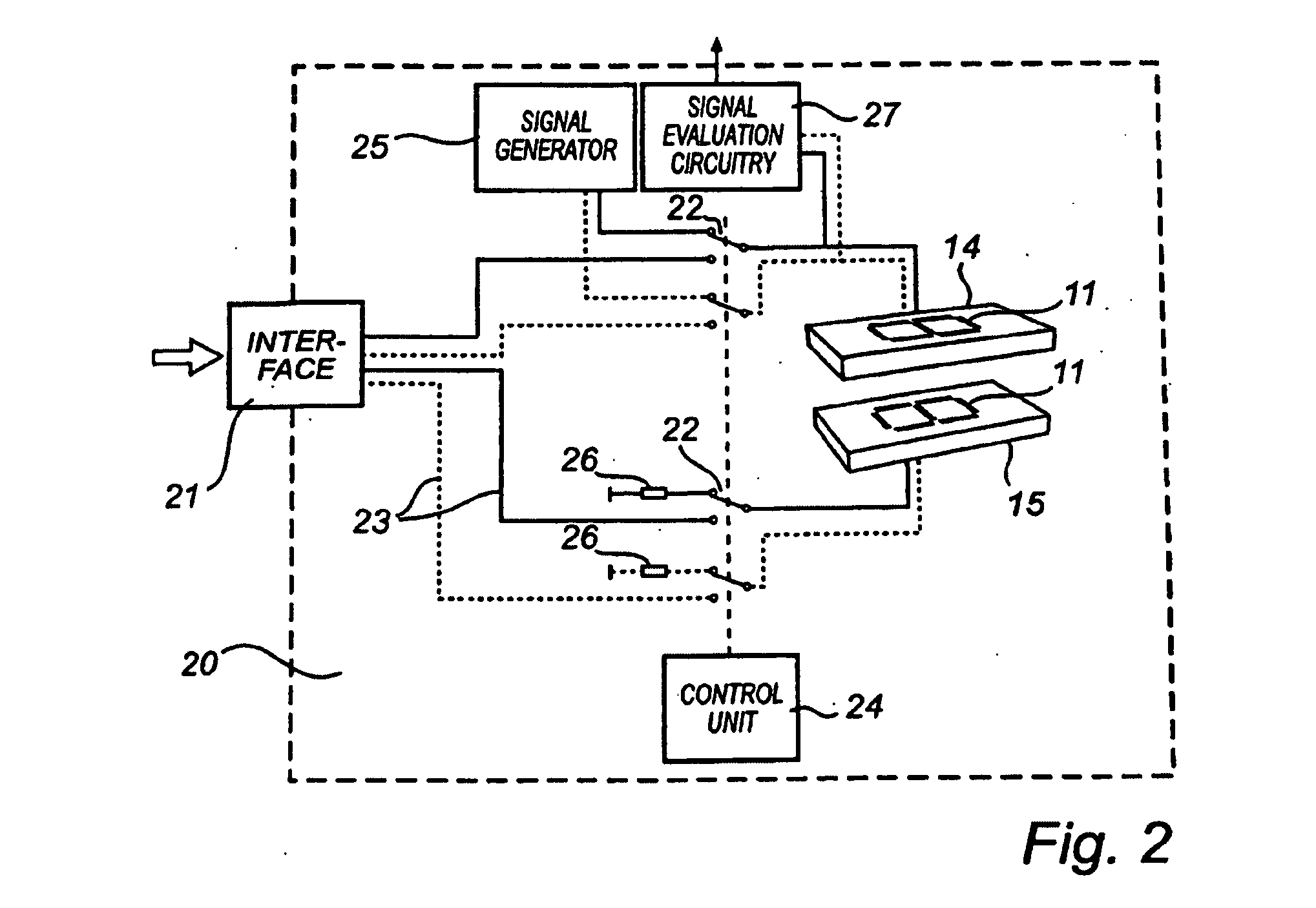High speed 3D multi touch sensitive device
a multi-touch, touch-sensitive technology, applied in the direction of optics, instruments, electric digital data processing, etc., can solve the problems of difficult to view the information presented on the display, unsatisfactory transparency of the touch-sensitive layer, and inefficient way of realising a touch-sensitive display, etc., to achieve the effect of reliable touch detection
- Summary
- Abstract
- Description
- Claims
- Application Information
AI Technical Summary
Benefits of technology
Problems solved by technology
Method used
Image
Examples
Embodiment Construction
[0035]The most common display used today is the liquid crystal display (LCD) whose design and operation is well-known to the skilled person. Variants of the LCD display, e.g. Thin Film Transistor Displays (TFT) as well as other display techniques, such as Plasma Display Panels (PDP), Vacuum Fluorescent Displays (VFD), Ferroelectric Liquid Crystal displays (FLC), Surface stabilized cholesteric texture type (SSCT) displays, Organic Light Emitting Diode (OLED) displays, Electrical Paper Displays (EPD) or Electrical Ink Displays (EINK), and Liquid Crystal on Silicon (LCOS) displays are commonly used depending on the specific field of application. For the sake of simplicity the following text will disclose a touch sensitive display in form of a LCD, wherein a change in capacitance in the display is detected. The present invention is, however, not limited to such a display, but may be implemented on a display of any kind comprising at least one substrate on which at least one display elec...
PUM
 Login to View More
Login to View More Abstract
Description
Claims
Application Information
 Login to View More
Login to View More - R&D
- Intellectual Property
- Life Sciences
- Materials
- Tech Scout
- Unparalleled Data Quality
- Higher Quality Content
- 60% Fewer Hallucinations
Browse by: Latest US Patents, China's latest patents, Technical Efficacy Thesaurus, Application Domain, Technology Topic, Popular Technical Reports.
© 2025 PatSnap. All rights reserved.Legal|Privacy policy|Modern Slavery Act Transparency Statement|Sitemap|About US| Contact US: help@patsnap.com



